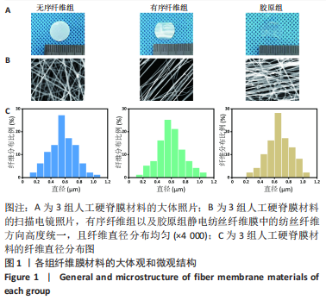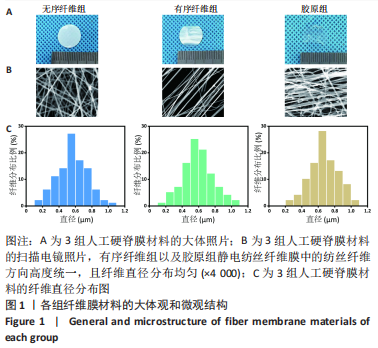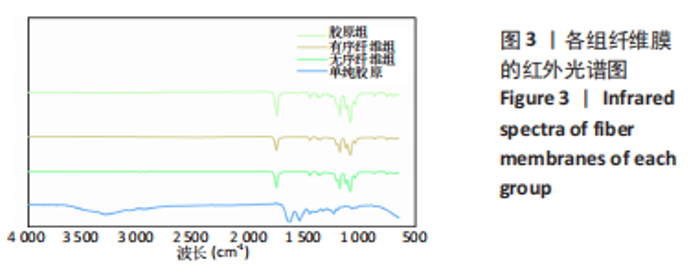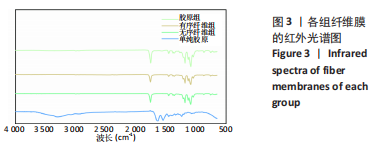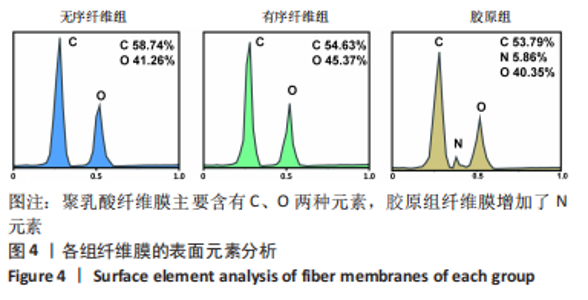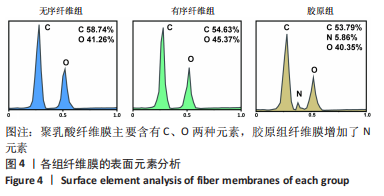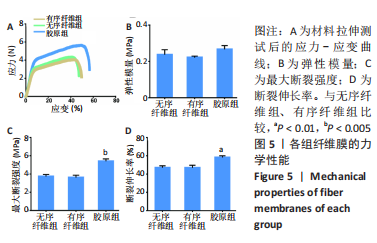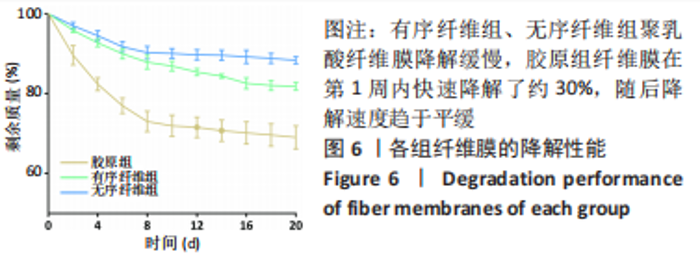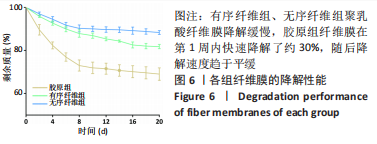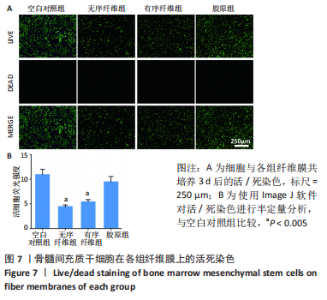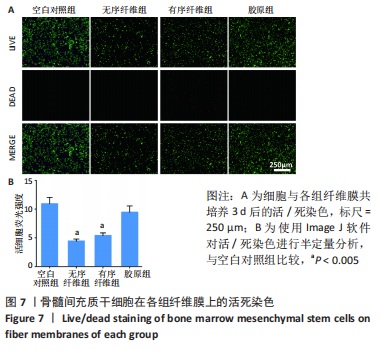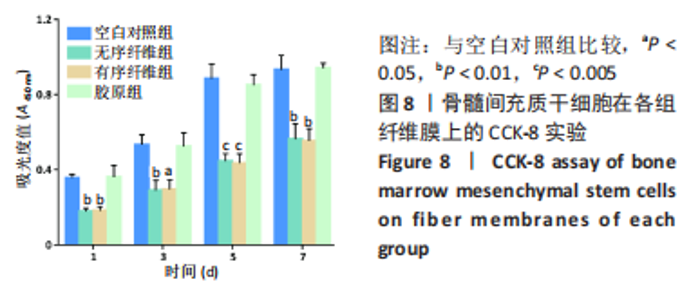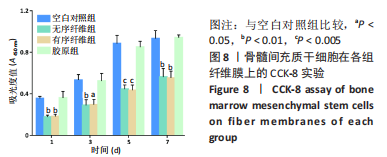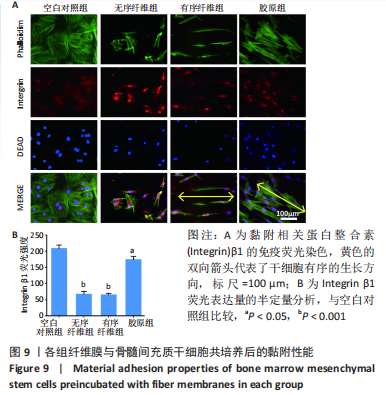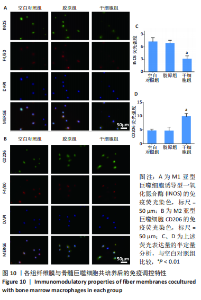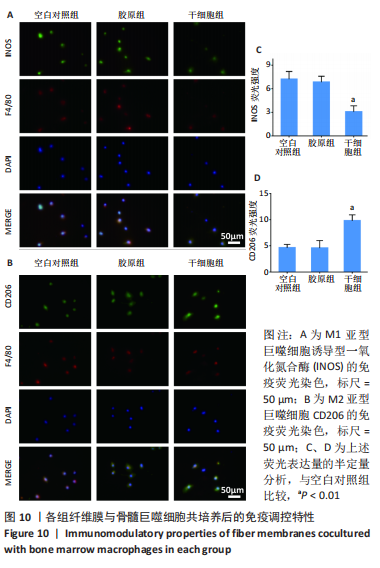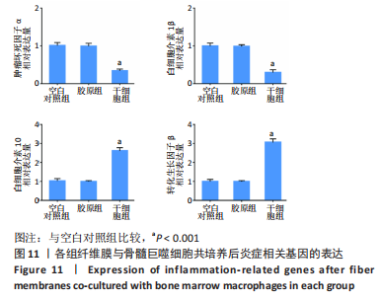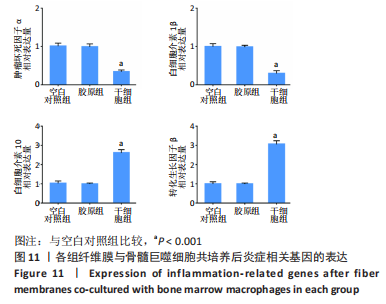Chinese Journal of Tissue Engineering Research ›› 2024, Vol. 28 ›› Issue (10): 1540-1546.doi: 10.12307/2024.248
Previous Articles Next Articles
In vitro experiment of stem cell engineered two-sided anisotropic electrospun membranes for promoting dural repair
Xu Jingzhi, Wang Wenbo, Sun Huiwen, Gu Yong
- Department of Orthopedics, First Affiliated Hospital of Soochow University, Suzhou 215000, Jiangsu Province, China
-
Received:2022-11-16Accepted:2023-02-08Online:2024-04-08Published:2023-08-19 -
Contact:Gu Yong, Associate chief physician, Associate professor, Master’s supervisor, Department of Orthopedics, First Affiliated Hospital of Soochow University, Suzhou 215000, Jiangsu Province, China -
About author:Xu Jingzhi, Master candidate, Department of Orthopedics, First Affiliated Hospital of Soochow University, Suzhou 215000, Jiangsu Province, China Wang Wenbo, Physician, Department of Orthopedics, First Affiliated Hospital of Soochow University, Suzhou 215000, Jiangsu Province, China -
Supported by:National Natural Science Foundation of China, No. 82072438 (to GY); Jiangsu Provincial Outstanding Youth Fund, No. BK20211504 (to GY)
CLC Number:
Cite this article
Xu Jingzhi, Wang Wenbo, Sun Huiwen, Gu Yong. In vitro experiment of stem cell engineered two-sided anisotropic electrospun membranes for promoting dural repair[J]. Chinese Journal of Tissue Engineering Research, 2024, 28(10): 1540-1546.
share this article
Add to citation manager EndNote|Reference Manager|ProCite|BibTeX|RefWorks
| [1] GUERIN P, EL FEGOUN AB, OBEID I, et al. Incidental durotomy during spine surgery: incidence, management and complications. A retrospective review. Injury. 2012;43(4):397-401. [2] LUSZCZYK MJ, BLAISDELL GY, WIATER BP, et al. Traumatic dural tears: what do we know and are they a problem? Spine J. 2014;14(1):49-56. [3] WEBER C, PIEK J, GUNAWAN D. Health care costs of incidental durotomies and postoperative cerebrospinal fluid leaks after elective spinal surgery. Eur Spine J. 2015;24(9):2065-2068. [4] HEO DH, HA JS, LEE DC, et al. Repair of Incidental Durotomy Using Sutureless Nonpenetrating Clips via Biportal Endoscopic Surgery. Global Spine J. 2022;12(3): 452-457. [5] SKOVSTED YDE S, BRUNBJERG ME, GUDMUNDSDOTTIR G, et al. Dural repair using porcine ADM: two cases and a literature review. Case Reports Plast Surg Hand Surg. 2017;4(1):5-8. [6] STENDEL R, DANNE M, FISS I, et al. Efficacy and safety of a collagen matrix for cranial and spinal dural reconstruction using different fixation techniques. J Neurosurg. 2008;109(2):215-521. [7] BOHOUN C A, GOTO T, MORISAKO H, et al. Skull Base Dural Repair Using Autologous Fat as a Dural Substitute: An Efficient Technique. World Neurosurg. 2019;127:e896-e900. [8] FAN B, WEI Z, YAO X, et al. Microenvironment Imbalance of Spinal Cord Injury. Cell Transplant. 2018;27(6):853-866. [9] VENKATALAXMI A, PADMAVATHI BS, AMARANATH T. A general solution of unsteady Stokes equations. Fluid Dyn Res. 2004;35(3):229-236. [10] LI Q, MA L, GAO C. Biomaterials for in situ tissue regeneration: development and perspectives. J Mater Chem B. 2015;3(46):8921-8938. [11] SCHMALZ P, GRIESSENAUER C, OGILVY CS, et al. Use of an Absorbable Synthetic Polymer Dural Substitute for Repair of Dural Defects: A Technical Note. Cureus. 2018;10(1):e2127. [12] LI J, TIAN J, LI C, et al. A hydrogel spinal dural patch with potential anti-inflammatory, pain relieving and antibacterial effects. Bioact Mater. 2022;14:389-401. [13] LI Q, MU L, ZHANG F, et al. A novel fish collagen scaffold as dural substitute. Mater Sci Eng C Mater Biol Appl. 2017;80:346-351. [14] WANG Z, CUI W. Two Sides of Electrospun Fiber in Promoting and Inhibiting Biomedical Processes. Advanced Therapeutics. 2020;4(1): 2000096. [15] VIGANI B, ROSSI S, SANDRI G, et al. Design and criteria of electrospun fibrous scaffolds for the treatment of spinal cord injury. Neural Regen Res. 2017;12(11): 1786-1790. [16] XU Y, CUI W, ZHANG Y, et al. Hierarchical Micro/Nanofibrous Bioscaffolds for Structural Tissue Regeneration. Adv Healthc Mater. 2017;6(13). doi: 10.1002/adhm.201601457. [17] CHEN AY, ZHONG C, LU TK. Engineering living functional materials. ACS Synth Biol. 2015;4(1):8-11. [18] TANG TC, AN B, HUANG Y, et al. Materials design by synthetic biology. Na Rev Mater. 2020;6(4):332-350. [19] SHANG L, SHAO C, CHI J, et al. Living Materials for Life Healthcare. Acc Mater Res. 2020;2(1):59-70. [20] WANG S, QU X, ZHAO RC. Clinical applications of mesenchymal stem cells. J Hematol Oncol. 2012;5:19. [21] BRUNELLE AR, HORNER CB, LOW K, et al. Electrospun thermosensitive hydrogel scaffold for enhanced chondrogenesis of human mesenchymal stem cells. Acta Biomater. 2018;66:166-176. [22] LV B, ZHANG X, YUAN J, et al. Biomaterial-supported MSC transplantation enhances cell-cell communication for spinal cord injury. Stem Cell Res Ther. 2021;12(1):36. [23] MOTHE AJ, TATOR CH. Advances in stem cell therapy for spinal cord injury . J Clin Invest. 2012;122(11): 824-3834. [24] MARDPOUR S, HAMIDIEH AA, TALEAHMAD S, et al. Interaction between mesenchymal stromal cell-derived extracellular vesicles and immune cells by distinct protein content. J Cell Physiol. 2019;234(6):8249-8258. [25] ANTON K, BANERJEE D, GLOD J. Macrophage-associated mesenchymal stem cells assume an activated, migratory, pro-inflammatory phenotype with increased IL-6 and CXCL10 secretion. PLoS One. 2012;7(4):e35036. [26] CARTY F, MAHON BP, ENGLISH K. The influence of macrophages on mesenchymal stromal cell therapy: passive or aggressive agents? Clin Exp Immunol. 2017; 188(1):1-11. [27] CHUNG E, SON Y. Crosstalk between mesenchymal stem cells and macrophages in tissue repair. Tissue Eng Regen Med. 2014;11(6):431-438. [28] DAFFORD EE, ANDERSON PA. Comparison of dural repair techniques. Spine J. 2015;15(5):1099-1105. [29] XI K, GU Y, TANG J, et al. Microenvironment-responsive immunoregulatory electrospun fibers for promoting nerve function recovery. Nat Commun. 2020; 11(1):4504. [30] WU L, GU Y, LIU L, et al. Hierarchical micro/nanofibrous membranes of sustained releasing VEGF for periosteal regeneration. Biomaterials. 2020;227:119555. [31] TANG J, XI K, CHEN H, et al. Flexible Osteogenic Glue as an All‐In‐One Solution to Assist Fracture Fixation and Healing. Adv Funct Mater. 2021;31(38):2102465.1-2102465.16. [32] BAI J, WANG H, CHEN H, et al. Biomimetic osteogenic peptide with mussel adhesion and osteoimmunomodulatory functions to ameliorate interfacial osseointegration under chronic inflammation. Biomaterials. 2020;255:120197. [33] LEE HG, KANG MS, KIM SY, et al. Dural Injury in Unilateral Biportal Endoscopic Spinal Surgery. Global Spine J. 2021;11(6):845-851. [34] NAGEL SJ, REDDY CG, FRIZON LA, et al. Spinal dura mater: biophysical characteristics relevant to medical device development. J Med Eng Technol. 2018;42(2):128-139. [35] SHIN JK, YOUN MS, SEONG YJ, et al. Iatrogenic dural tear in endoscopic lumbar spinal surgery: full endoscopic dural suture repair (Youn’s technique). Eur Spine J. 2018;27(Suppl 3):544-548. [36] SHIMADA Y, HONGO M, MIYAKOSHI N, et al. Dural substitute with polyglycolic acid mesh and fibrin glue for dural repair: technical note and preliminary results. J Orthop Sci. 2006;11(5):454-458. [37] IWATA A, TAKAHATA M, KADOYA K, et al. Effective Repair of Dural Tear Using Bioabsorbable Sheet With Fibrin Glue. Spine (Phila Pa 1976). 2017;42(18):1362-1366. [38] PENG Z, GAO W, YUE B, et al. Promotion of neurological recovery in rat spinal cord injury by mesenchymal stem cells loaded on nerve-guided collagen scaffold through increasing alternatively activated macrophage polarization. J Tissue Eng Regen Med. 2018;12(3):e1725-e736. [39] LUZ-CRAWFORD P, JORGENSEN C, DJOUAD F. Mesenchymal Stem Cells Direct the Immunological Fate of Macrophages. Results Probl Cell Differ. 2017;62:61-72. [40] ORR MB, GENSEL JC. Spinal Cord Injury Scarring and Inflammation: Therapies Targeting Glial and Inflammatory Responses. Neurotherapeutics. 2018;15(3):541-553. |
| [1] | Shen Jiangyong, He Xi, Tang Yuting, Wang Jianjun, Liu Jinyi, Chen Yuanyuan, Wang Xinyi, Liu Tong, Sun Haoyuan. RAS-selective lethal small molecule 3 inhibits the fibrosis of pathological scar fibroblasts [J]. Chinese Journal of Tissue Engineering Research, 2024, 28(8): 1168-1173. |
| [2] | Wang Wu, Fan Xiaolei, Xie Jie, Hu Yihe, Zeng Min. Hydroxyapatite-polyvinyl alcohol/collagen-chitosan-gelatin composite hydrogel for repairing rabbit osteochondral defect [J]. Chinese Journal of Tissue Engineering Research, 2024, 28(5): 682-689. |
| [3] | Xu Rong, Wang Haojie, Geng Mengxiang, Meng Kai, Wang Hui, Zhang Keqin, Zhao Huijing. Research advance in preparation and functional modification of porous polytetrafluoroethylene artificial blood vessels [J]. Chinese Journal of Tissue Engineering Research, 2024, 28(5): 759-765. |
| [4] | Yin Tong, Yang Jilei, Li Yourui, Liu Zhuoran, Jiang Ming. Application of core-shell structured nanofibers in oral tissue regeneration [J]. Chinese Journal of Tissue Engineering Research, 2024, 28(5): 766-770. |
| [5] | Lin Feng, Cheng Ling, Gao Yong, Zhou Jianye, Shang Qingqing. Hyaluronic acid hydrogel-encapsulated bone marrow mesenchymal stem cells promote cardiac function in myocardial infarction rats (III) [J]. Chinese Journal of Tissue Engineering Research, 2024, 28(3): 355-359. |
| [6] | Bi Yujie, Ma Dujun, Peng Liping, Zhou Ziqiong, Zhao Jing, Zhu Houjun, Zhong Qiuhui, Yang Yuxin. Strategy and significance of Chinese medicine combined with medical hydrogel for disease treatment [J]. Chinese Journal of Tissue Engineering Research, 2024, 28(3): 419-425. |
| [7] | Ran Lei, Han Haihui, Xu Bo, Wang Jianye, Shen Jun, Xiao Lianbo, Shi Qi. Molecular docking analysis of the anti-inflammatory mechanism of Cibotium barometz and Epimedium for rheumatoid arthritis: animal experiment validation [J]. Chinese Journal of Tissue Engineering Research, 2024, 28(2): 208-215. |
| [8] | Chen Ligang, He Xiaoming, Tan Yu, Xiao Yuzhi, Ma Chuntao, Guo Liang. Bone metabolism in patients with osteonecrosis of the femoral head based on etiology and Association Research Circulation Osseous staging [J]. Chinese Journal of Tissue Engineering Research, 2024, 28(16): 2461-2466. |
| [9] | Zhao Shasha, He Qing, Li Jia, Wu Ying. Effects of recombinant human collagen supplementation on extracellular matrix remodeling in mouse skeletal muscle after eccentric exercise [J]. Chinese Journal of Tissue Engineering Research, 2024, 28(16): 2542-2549. |
| [10] | Yao Siqi, Li Wenzheng, Wang Hong. Transforming growth factor beta/Smad signaling pathway and targeted therapy of keloid scars [J]. Chinese Journal of Tissue Engineering Research, 2024, 28(16): 2619-2624. |
| [11] | Zhang Hongxia, Li Xingchao, Gao Xixin, Zhang Xiao, Mei Shuang, Ma Hanxi, Zhang Tian. The histological and thickness changes of attached gingiva following grafting with different soft tissue substitutes in the labial region of the cuspids in Beagles [J]. Chinese Journal of Tissue Engineering Research, 2024, 28(11): 1660-1665. |
| [12] | Lyu Shangyi, He Huiyu, Wufanbieke · Baheti, Yang Quan, Ma Lisha, Han Xiangzhen. Physicochemical properties and biocompatibility of graphene oxide-hydroxyapatite composite coating materials [J]. Chinese Journal of Tissue Engineering Research, 2024, 28(10): 1477-1483. |
| [13] | Su Kunyang, Chen Bineng, Chen Yiliang, Jin Shaofeng. Strontium ranelate-loaded sodium alginate/collagen hydrogel promotes bone defect repair in osteoarthritis [J]. Chinese Journal of Tissue Engineering Research, 2024, 28(10): 1568-1574. |
| [14] | Jiang Yu, He Feng, Liu Huan, Wu Ruixin. Application of melt electrowriting technology in tissue engineering [J]. Chinese Journal of Tissue Engineering Research, 2024, 28(10): 1606-1612. |
| [15] | Fan Yongjing, Wang Shu, Jin Wulong. Characteristics, advantages and application of osteogenic differentiation of jaw bone marrow mesenchymal stem cells [J]. Chinese Journal of Tissue Engineering Research, 2024, 28(1): 100-106. |
| Viewed | ||||||
|
Full text |
|
|||||
|
Abstract |
|
|||||
